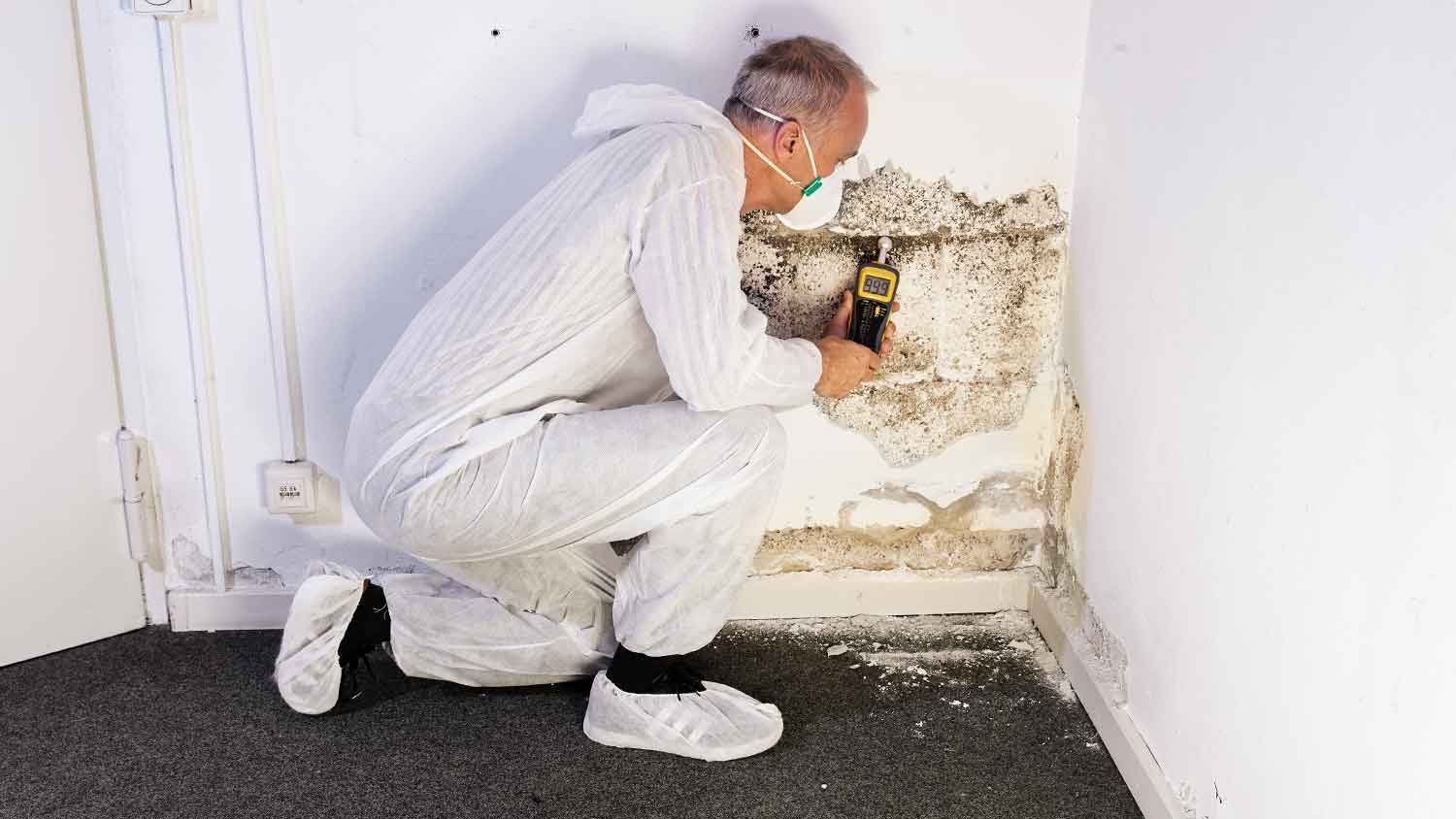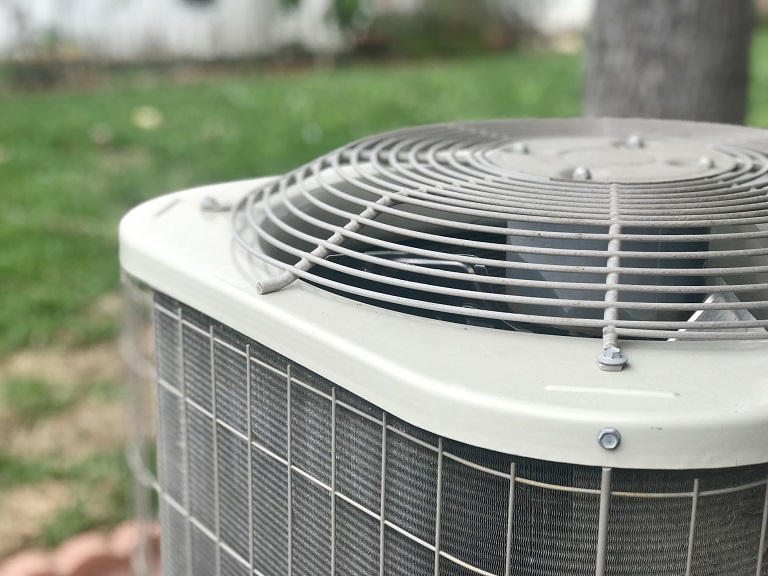
A faulty evaporator coil is a common cause of AC failure. But how much does an evaporator coil replacement cost? We explore the factors here.
Proper humidity is essential for your health


Basements are notorious for humidity concerns.
Both high and low humidity pose risks.
An optimal humidity level is between 30% and 50%.
To create a healthy and structurally sound living space, one often overlooked yet crucial element is the humidity level in a basement. Answering what should the humidity level be in a basement will help homeowners achieve the best air quality in a troublesome area. Learn everything you need to know about the dangers of both high and low humidity levels in basements, and how to maintain optimal levels.
Basement humidity is a major concern in homes due to the unique environmental conditions of below-ground spaces. High humidity levels are common in basements due to factors such as poor ventilation, limited sunlight, and their location below ground. Water infiltration from foundation cracks, inadequate waterproofing, or heavy rainfall exacerbates the situation, creating an environment that promotes mold growth, musty odors, and structural damage. Effective management of basement humidity protects the structural integrity of the home and promotes a healthier indoor environment by preventing moisture-related issues.


High humidity in basements can pose significant risks to both the health of occupants and the structural integrity of the building. One of the most pressing issues associated with elevated humidity levels is the rapid growth of mold and mildew. These microorganisms thrive in damp environments, releasing airborne spores that can trigger respiratory problems and exacerbate allergies.
The presence of mold not only jeopardizes indoor air quality, but also poses a threat to the structural components of the building, leading to decay, rot, and degradation of materials over time. High humidity can also create an inviting environment for pests, including dust mites and certain insects, which can further compromise the overall cleanliness and hygiene of the space. To mitigate these consequences, it’s necessary to implement effective dehumidification measures and address the root causes of moisture buildup in a basement promptly.
Low humidity levels in a basement can be equally as problematic as high humidity levels, presenting a distinct set of consequences. One significant issue associated with insufficient humidity is the potential for structural damage. Dry air can lead to the contraction of wooden materials, causing them to crack and warp. This not only jeopardizes the aesthetic appeal of the basement but also poses a threat to the stability of the overall home.
Excessively dry air can contribute to respiratory problems and discomfort for occupants. Dry air can irritate the respiratory tract, leading to symptoms such as dry throat, itchy eyes, and exacerbation of existing respiratory conditions. Enabling proper insulation, the use of humidifiers, and selecting moisture-resistant materials are important steps in maintaining a balanced and healthy basement environment.
| Dehumidifier | Humidifier |
|---|---|
| Extracts excess moisture | Releases water vapor |
| Prevents mold and mildew growth | Prevents material warping |
| Reduces condensation | Reduces dry air |
Maintaining ideal basement humidity requires preventing both excessively high and low levels of humidity. To prevent high humidity, effective dehumidification techniques must be used. This includes placing dehumidifiers in strategic locations to efficiently remove excess moisture from the air while improving ventilation and reducing dampness. Waterproofing methods, such as sealing cracks and installing sump pumps, play an instrumental role in minimizing water intrusion and preventing mold growth.
To prevent low humidity, humidifiers can be used to introduce moisture into the air. Proper insulation of walls and floors is vital to maintain optimal humidity levels, which protects wooden structures from damage and instability.
To achieve the ideal indoor humidity level, the relative humidity in a basement should range between 30% to 50%.The easiest way to measure humidity in a home is by using a hygrometer. Regular inspections, prompt issue resolution, and the use of moisture-resistant materials are essential components of effective basement humidity control.
Maintaining an optimal humidity level in a basement involves a combination of proactive measures and regular upkeep. Regularly inspect the basement for potential sources of moisture, such as leaks or condensation. Address any water intrusion to prevent the escalation of humidity levels. Proper ventilation is equally vital to ensure adequate airflow to prevent stagnation and encourage moisture evaporation.
To actively remove excess moisture, use dehumidifiers, especially in damp climates. If dry air is a concern, a humidifier should be used. Insulating walls and floors can contribute to temperature regulation and moisture control, preventing both excessively high and low humidity conditions.
While DIY efforts are valuable, hiring a professional HVAC specialist is highly beneficial for ensuring a comprehensive and effective approach to basement humidity control. Professionals possess the expertise to identify underlying issues causing humidity problems, such as structural vulnerabilities or inadequate ventilation systems. If you're concerned about high humidity, you may consider hiring a mold remediation specialist for an inspection.
Their experience allows for the implementation of targeted solutions, whether it involves waterproofing measures, installation of advanced ventilation systems, or recommending and installing the right dehumidification equipment tailored to the specific needs of the basement.
Ultimately, relying on professionals not only saves time but also provides peace of mind, knowing that the basement is in the hands of experts who can implement lasting solutions for optimal humidity control.
From average costs to expert advice, get all the answers you need to get your job done.

A faulty evaporator coil is a common cause of AC failure. But how much does an evaporator coil replacement cost? We explore the factors here.

A mini-split allows for zoned cooling, helpful for cooling spaces like garages. Learn the cost to install a mini-split unit in a garage with this guide.

Discover the true window AC unit installation cost to learn about labor, permits, and ways to save on your window AC project.

Discover the average air handler replacement cost, including labor and materials, plus expert tips to help you budget and save on your HVAC upgrade.

Having dirty evaporator and condenser coils works your HVAC system harder than it needs to. Here’s how to clean your air conditioner coils like a pro.
How to clean your air conditioner depends on the unit type. Sometimes, a good hose-down is all you need if you have centralized AC. This guide can help with the cleaning process.